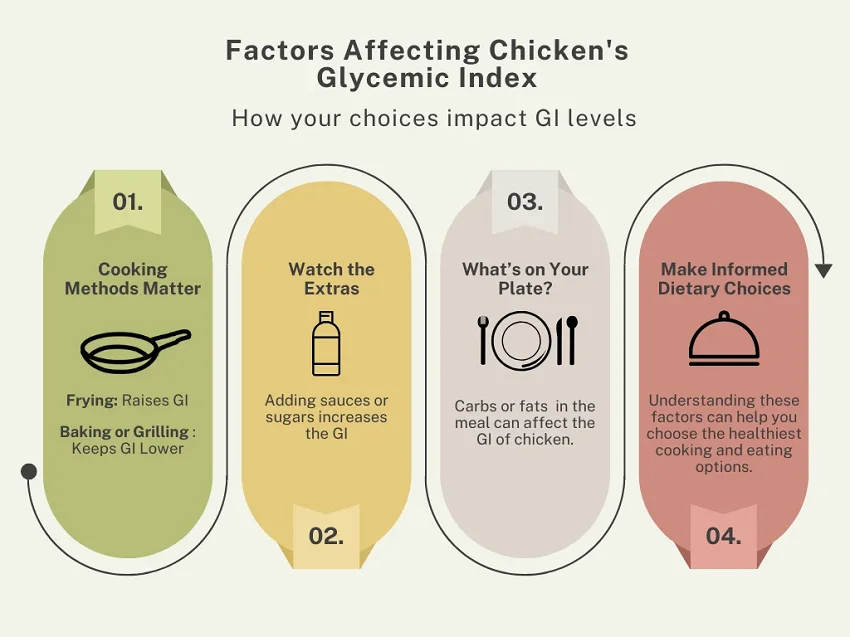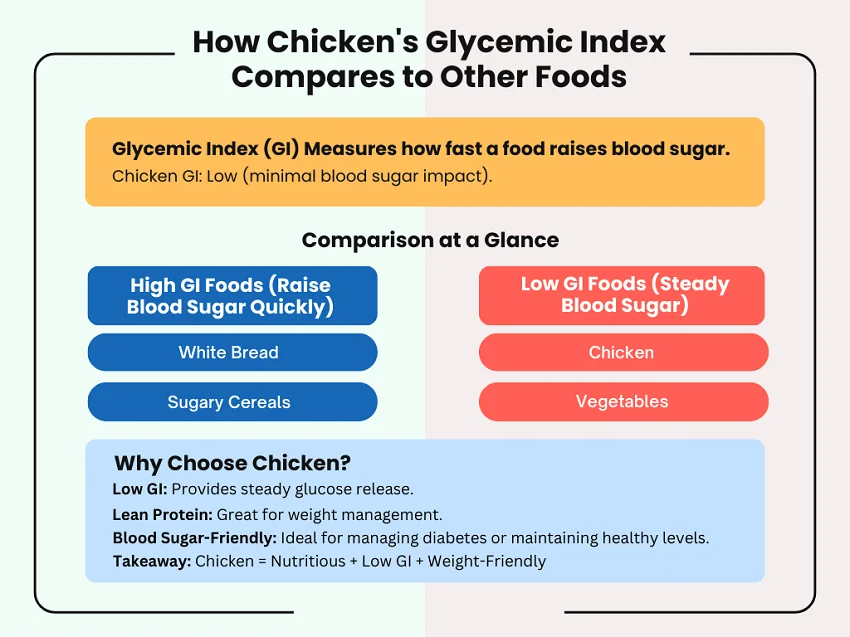Definition of glycemic index
The glycemic index is a measure of how quickly carbohydrates in a food raise blood sugar levels. It ranks carbohydrates on a scale from 0 to 100 based on their effect on blood sugar levels. Foods with a high glycemic index (GI) are quickly digested and absorbed, causing a rapid rise in blood sugar levels. On the other hand, foods with a low GI are digested and absorbed more slowly, resulting in a slower and more gradual increase in blood sugar levels. Understanding the glycemic index can be helpful for managing blood sugar levels, especially for individuals with diabetes or those looking to control their weight and overall health.
Importance of glycemic index
The glycemic index is a measure of how quickly a particular food raises blood sugar levels. It is important to understand the glycemic index because it can have a significant impact on our overall health. Foods with a high glycemic index can cause a rapid spike in blood sugar levels, leading to increased hunger, weight gain, and an increased risk of developing chronic diseases such as diabetes. On the other hand, foods with a low glycemic index release sugar into the bloodstream more slowly, providing a steady source of energy and promoting satiety. By paying attention to the glycemic index of the foods we consume, we can make informed choices that support our health and well-being.
How is glycemic index measured?
Glycemic index is measured by comparing the effect of consuming a specific amount of carbohydrates from a food on blood sugar levels, compared to consuming the same amount of carbohydrates from a reference food, usually glucose or white bread. The glycemic index is a numerical value assigned to a food, indicating how quickly or slowly it raises blood sugar levels. Foods with a high glycemic index are rapidly digested and absorbed, causing a sharp increase in blood sugar levels, while foods with a low glycemic index are digested and absorbed more slowly, resulting in a gradual and steady increase in blood sugar levels.
What is Chicken Glycemic Index?
Definition of chicken glycemic index
The definition of chicken glycemic index refers to the measurement of how quickly chicken raises blood sugar levels after consumption. It is a scale that ranks foods based on their impact on blood glucose levels. The glycemic index of chicken is relatively low, making it a suitable protein source for individuals with diabetes or those following a low-carbohydrate diet. Consuming chicken as part of a balanced meal can help maintain stable blood sugar levels and promote overall health and well-being.

Comparison of chicken glycemic index with other foods
The glycemic index (GI) is a measure of how quickly a food raises blood glucose levels. When comparing the glycemic index of chicken with other foods, it is important to note that chicken has a low GI value. This means that it has a minimal impact on blood sugar levels compared to other high GI foods. For example, white bread has a high GI value, causing a rapid increase in blood sugar levels. In contrast, chicken provides a steady release of glucose into the bloodstream, making it a healthier option for individuals looking to manage their blood sugar levels. Additionally, chicken is a lean source of protein, making it an excellent choice for those looking to maintain or lose weight. Overall, when considering the glycemic index, chicken stands out as a nutritious and blood sugar-friendly food option.

Health Benefits of Low Glycemic Index Chicken
Stabilizing blood sugar levels
Stabilizing blood sugar levels is crucial for maintaining overall health and preventing various chronic conditions. When it comes to chicken glycemic index, it plays a significant role in regulating blood sugar levels. Chicken is considered a low glycemic index food, meaning it has a minimal impact on blood sugar levels. This is beneficial for individuals with diabetes or those looking to manage their weight. Including chicken in your diet can help stabilize blood sugar levels, providing a steady source of energy and preventing spikes in blood sugar. Additionally, chicken is a lean source of protein, which can further aid in blood sugar control and promote satiety. Incorporating chicken into balanced meals can contribute to a well-rounded diet that supports stable blood sugar levels and overall health.
Weight management
Weight management plays a crucial role in maintaining a healthy lifestyle. When it comes to chicken glycemic index, understanding how it affects weight management is essential. The glycemic index of chicken is relatively low, which means it has a minimal impact on blood sugar levels. This makes chicken an excellent choice for individuals looking to manage their weight or control their blood sugar levels. Incorporating chicken into a balanced diet can help promote satiety, reduce cravings, and support weight loss goals. Additionally, chicken is a lean source of protein, which can aid in building and maintaining muscle mass, further contributing to weight management efforts. By including chicken in your diet, you can enjoy a delicious and nutritious food that supports your weight management journey.

Reducing the risk of chronic diseases
Reducing the risk of chronic diseases is a crucial aspect of maintaining good health. One way to achieve this is by paying attention to the glycemic index of foods, including chicken. The glycemic index measures how quickly and how much a particular food raises blood sugar levels. By choosing foods with a lower glycemic index, such as chicken, individuals can help regulate their blood sugar levels and reduce the risk of developing chronic diseases like diabetes and heart disease. Incorporating chicken into a balanced diet can provide essential nutrients while promoting overall health and well-being.
Cooking Methods and Glycemic Index of Chicken
Effect of cooking methods on chicken glycemic index
The effect of cooking methods on chicken glycemic index is an important aspect to consider. Different cooking methods can alter the glycemic index of chicken, which is a measure of how quickly carbohydrates in the chicken are converted to glucose and enter the bloodstream. For example, grilling or roasting chicken can result in a lower glycemic index compared to frying or deep-frying, as these methods tend to preserve the natural moisture and reduce the formation of advanced glycation end products (AGEs). Steaming or boiling chicken can also help maintain a lower glycemic index, as these methods do not involve the use of added fats or oils. Overall, the choice of cooking method can significantly impact the glycemic index of chicken, making it important to consider when planning meals for individuals with specific dietary needs or health conditions.
Best cooking methods for low glycemic index chicken
When it comes to cooking chicken with a low glycemic index, there are several methods that can help you achieve this. One of the best cooking methods is grilling, as it allows the excess fat to drip off the chicken, resulting in a leaner and healthier dish. Another great option is baking, which helps retain the natural flavors of the chicken while minimizing the use of added fats or oils. Steaming is also a fantastic method, as it preserves the nutrients and moisture in the chicken while keeping it tender and juicy. Lastly, poaching chicken in water or broth is a wonderful way to cook it with minimal added fats and retain its natural juiciness. By using these cooking methods, you can enjoy delicious chicken dishes with a low glycemic index, making them a healthier choice for your diet.
Tips for cooking chicken to maintain its glycemic index
Cooking chicken in a way that maintains its glycemic index can be a challenge. Here are some tips to help you out:
- Opt for grilling or baking instead of frying. This will help retain the natural flavors of the chicken without adding unnecessary fats.
- Marinate the chicken with herbs and spices instead of using sugary sauces or marinades. This will add flavor without increasing the glycemic index.
- Avoid overcooking the chicken as it can lead to a higher glycemic index. Cook it until it is just tender and juicy.
- Serve the chicken with low-glycemic index sides such as steamed vegetables or quinoa to balance out the meal.
By following these tips, you can enjoy delicious chicken dishes while keeping the glycemic index in check.
Chicken Glycemic Index and Dietary Recommendations
Incorporating low glycemic index chicken into a balanced diet
Incorporating low glycemic index chicken into a balanced diet is a smart choice for those looking to maintain stable blood sugar levels. Chicken is a lean source of protein that is low in carbohydrates, making it an ideal food for individuals following a low glycemic index diet. By including chicken in your meals, you can enjoy the benefits of its high protein content while minimizing the impact on your blood sugar levels. Whether grilled, baked, or roasted, chicken can be easily incorporated into a variety of dishes, making it a versatile and delicious addition to any balanced diet.
Recommended portion sizes of chicken
Chicken is a versatile and popular protein source that can be enjoyed in a variety of dishes. When it comes to portion sizes, it is important to consider the recommended guidelines. The recommended portion size for chicken is about 3-4 ounces, which is roughly the size of a deck of cards. This portion size provides a balanced amount of protein without going overboard on calories. It is also important to keep in mind that the cooking method and any added sauces or toppings can affect the overall nutritional content of the dish. By following the recommended portion sizes, you can enjoy the health benefits of chicken while maintaining a balanced diet.
Combining chicken with other low glycemic index foods
Combining chicken with other low glycemic index foods can be a great way to maintain stable blood sugar levels. Low glycemic index foods, such as vegetables, whole grains, and legumes, can help slow down the absorption of carbohydrates and prevent spikes in blood sugar. By incorporating these foods into meals that include chicken, you can create balanced and nutritious dishes that promote overall health and well-being. Some delicious options include grilled chicken with roasted vegetables, chicken stir-fry with brown rice, or chicken salad with mixed greens and chickpeas. Experimenting with different combinations can add variety to your diet while keeping your blood sugar in check.
Summary of key points
The glycemic index is a measure of how quickly carbohydrates in food raise blood sugar levels. Chicken has a low glycemic index, making it a good choice for those looking to manage their blood sugar levels. It is also a lean source of protein, making it a healthy option for weight management. Additionally, chicken is a versatile ingredient that can be cooked in various ways and incorporated into a variety of dishes. Overall, the glycemic index of chicken is low, making it a nutritious and delicious addition to a balanced diet.
Importance of considering glycemic index in food choices
The glycemic index is an important factor to consider when making food choices. It measures how quickly carbohydrates in food are converted into glucose and enter the bloodstream. Foods with a high glycemic index can cause a rapid spike in blood sugar levels, leading to a quick burst of energy followed by a crash. On the other hand, foods with a low glycemic index are digested and absorbed more slowly, providing a steady release of energy and helping to maintain stable blood sugar levels. By considering the glycemic index of foods, individuals can make more informed choices about what they eat, helping to manage weight, prevent chronic diseases, and maintain overall health and well-being.
Final thoughts on chicken glycemic index
In conclusion, understanding the glycemic index of chicken can be beneficial for individuals who are concerned about their blood sugar levels. While chicken itself is a lean protein source and does not contain carbohydrates, the way it is prepared and cooked can affect its glycemic index. It is important to note that the glycemic index of chicken can vary depending on factors such as cooking methods and ingredients used in marinades or sauces. Therefore, individuals with specific dietary needs or health conditions should consult with a healthcare professional or registered dietitian for personalized advice. Overall, incorporating chicken into a balanced diet can contribute to a healthy lifestyle.




